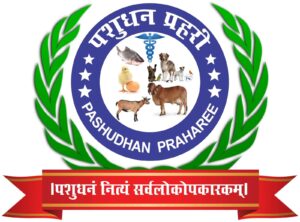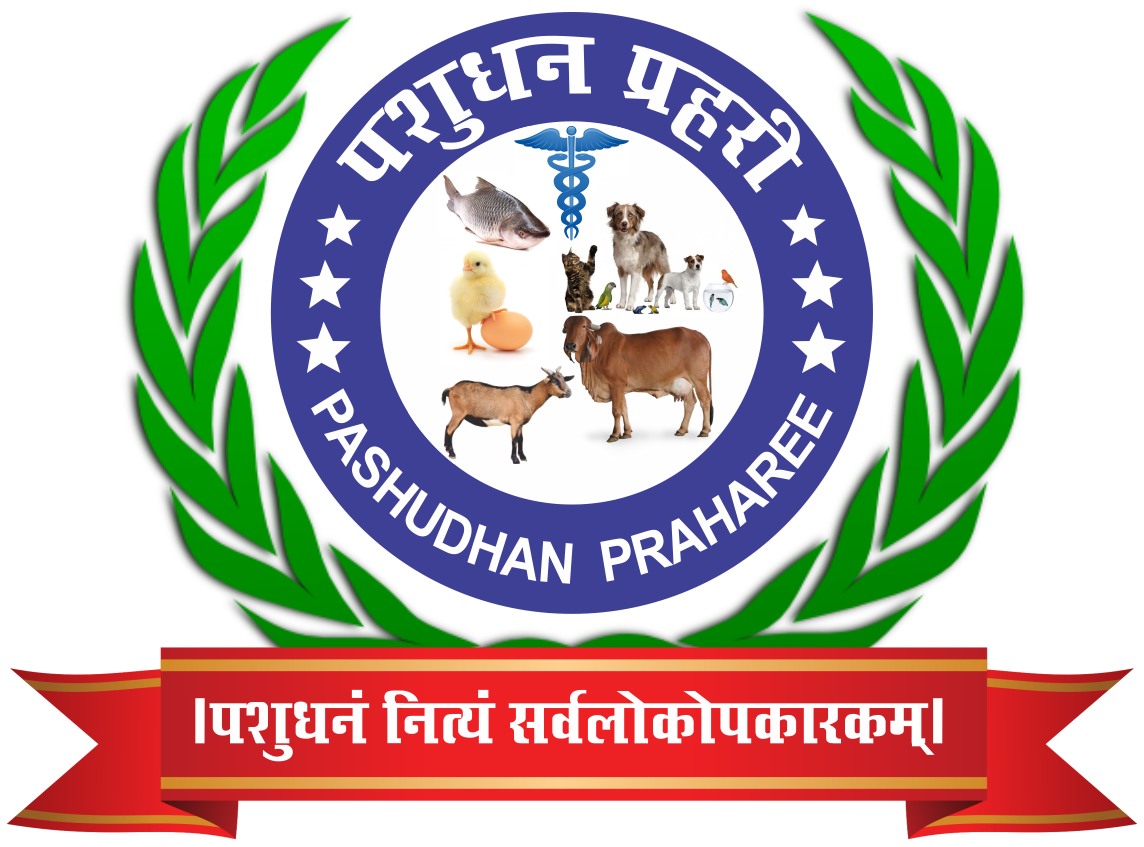One Health, One Family: A Veterinary Homeopathy Perspective for a Healthier World
Mayank Pal
Wildlife Health and Forensic Centre, College of Veterinary Science & AH, Anjora. DSVCKV, Durg, Chhattisgarh.
*Corresponding Author: Dr. Mayank Pal; Email: drmayankpalvet@gmail.com
Introduction: Healing Beyond Species—A New Dawn in Veterinary Care
Imagine a world where a farmer’s cow, a child’s puppy, a wild elephant, and a backyard garden all receive healthcare grounded in compassion, sustainability, and scientific insight. Imagine if a remedy that healed your pet’s allergy could also help a child’s eczema, or if the same healing principle applied to crops suffering from fungal attacks. This isn’t futuristic fiction—it’s the quietly growing reality of veterinary homeopathy woven into the larger fabric of the One Health, One Family movement.
As we celebrate World Homeopathy Day —commemorating the legacy of Dr. Samuel Hahnemann, the pioneer of this gentle, holistic system—we are called not just to remember the past, but to reimagine the future of healing. A future where every animal, every plant, and every person is part of a connected ecosystem of care.
The 2025 theme, “One Health, One Family,” aligns seamlessly with the veterinary application of homeopathy. It emphasizes that human health cannot exist in isolation from the health of animals and the environment. For veterinarians, pet owners, farmers, and wildlife conservationists, this is a powerful call to action—to treat our animals not just with medicine, but with empathy, science, and a vision for shared well-being.
The Veterinary Side of One Health
The One Health concept is now a cornerstone of global public health. It acknowledges that the health of humans, animals, and ecosystems are intricately connected. About 60% of human infectious diseases are zoonotic—meaning they originate in animals—and 75% of emerging infectious diseases in humans come from animal sources (CDC, 2022).
Veterinarians, therefore, play a frontline role in disease prevention, food safety, and environmental protection. From rural dairy farms to exotic animal clinics, their work safeguards not just animal welfare but global health security. Integrating homeopathy into veterinary practice further strengthens this role by offering treatments that are safe, non-toxic, and resistance-free—an essential need in an era of antimicrobial resistance and environmental degradation.
Veterinary Homeopathy: Gentle, Effective, and Aligned with Nature
Veterinary homeopathy operates on the same principles as human homeopathy—“like cures like” and individualized treatment—but tailored to the unique physiology, behavior, and symptoms of animals. It has been used successfully in companion animals, farm animals, wildlife, and even aquatic species.
Companion Animal Care
For pets, homeopathy provides relief for a range of conditions, including:
- Skin allergies and dermatitis
- Behavioral issues like anxiety or aggression
- Digestive upsets and food intolerances
- Age-related conditions like arthritis
Remedies like Arsenicum album, Apis mellifica, Ignatia, and Rhus toxicodendron are commonly used, often with results that avoid the side effects of conventional medications like steroids or sedatives.
Livestock and Dairy Medicine
In livestock, homeopathy reduces dependence on antibiotics and supports animal welfare in an eco-conscious manner. Conditions like:
- Mastitis in dairy cows
- Respiratory infections in calves
- Diarrhea in piglets
- Parasitic infestations in poultry
have all shown favorable outcomes when treated with homeopathic protocols (Mathie et al., 2010; Bhasin & Kothari, 2021).
This approach is not only humane but also consumer-safe: no chemical residues, no withdrawal periods, and no antibiotic resistance development.
Wildlife and Zoo Animal Applications
Wildlife veterinarians have begun exploring homeopathy for non-invasive treatment of stress, injuries, and infections in wild and captive animals where restraint and sedation can be dangerous.
Case studies include the use of homeopathy in:
- Elephants with foot rot
- Rehabilitated birds of prey
- Big cats with digestive disorders
Agro-Homeopathy: Healing the Plant Kingdom
Homeopathy doesn’t stop at animals. It extends to plant life—a field known as agro-homeopathy. Farmers and gardeners around the world are using homeopathic remedies to:
- Increase resistance to fungal, bacterial, and viral plant diseases
- Improve soil vitality
- Reduce pesticide use
Remedies such as Silicea, Calendula, and Sulphur have been used for seed germination, blight, and root rot, offering a zero-chemical alternative for sustainable farming. This naturally loops back into veterinary health—healthier crops mean healthier animal feed.
One Family: The Household as a Health Ecosystem
The phrase “One Family” evokes more than just the human family. In the context of veterinary homeopathy, it suggests that humans, animals, and nature form a symbiotic family system where each member affects the health of the others.
Families and Pets: Shared Healing
More families now include dogs, cats, rabbits, or birds as emotional companions. Homeopathy’s non-toxic, side-effect-free nature makes it ideal for treating pets at home.
Families using homeopathy often experience:
- Lower veterinary costs
- Greater involvement in animal care
- Stronger bondswith their pets through observation and healing
Farming Families: Better Livelihoods
For rural families, veterinary homeopathy has significant economic and ethical benefits:
- Lower treatment costs
- Higher productivity
- Healthier, chemical-free milk, eggs, and meat
- Lower environmental impact
This uplifts not only the animal but the entire family livelihood.
Conservation and Community Health
In rural and tribal communities, where livestock and agriculture are integrated with local ecosystems, veterinary homeopathy supports ecosystem health and resilience without overburdening limited resources.
Research and Case Studies: Evidence in Action
While more large-scale randomized trials are needed, current research and field data support the efficacy of veterinary homeopathy:
- Mastitis treatmentwith Belladonna and Bryonia showed faster recovery and fewer relapses (Bhasin & Kothari, 2021).
- Homeopathic prophylaxiswas used successfully in poultry farms during avian flu threats in parts of Asia.
- In Germany and Switzerland, organic dairy farms integrate homeopathy as part of their disease management protocols, reducing antibiotic use by up to 70%(Hamre et al., 2020).
Challenges and Opportunities
Lack of Awareness and Training
Veterinary colleges and practitioners often lack exposure to homeopathic protocols. Mainstream curricula need to incorporate integrative medicine to prepare vets for future-ready practice.
Resistance and Regulation
Skepticism remains due to conventional medical dominance and a lack of awareness about homeopathy’s scientific grounding. Policy support and standardization are needed to validate and regulate veterinary homeopathy practice globally.
The Way Forward
- Cross-disciplinary collaborationbetween veterinarians, homeopaths, and researchers
- Awareness campaignsin farming and pet communities
- Public health integrationof homeopathy into animal husbandry programs
Conclusion: Reclaiming Harmony Through Homeopathy
In an age of complexity, chronic disease, ecological collapse, and antimicrobial resistance, veterinary homeopathy offers a simple yet profound path forward. It calls us to shift from domination over animals and nature to coexistence and co-healing.
This World Homeopathy Day, let us embrace the theme of “One Health, One Family” not just as a slogan, but as a lifestyle and professional mission. Every vet, pet owner, farmer, and healer is a vital part of this family—one that includes all living beings.
Homeopathy reminds us that healing is not about fighting disease alone—it’s about restoring balance. In that balance, animals thrive, ecosystems renew, and humanity finds its place—not as a master of nature, but as a guardian of life.
References
- Centers for Disease Control and Prevention (CDC). (2022). Zoonotic Diseases. https://www.cdc.gov/onehealth/basics/zoonotic-diseases.html
- Mathie RT et al. (2014). Randomised placebo-controlled trials of individualised homeopathic treatment: Systematic review and meta-analysis. Systematic Reviews, 3(1), 142.
- Hamre HJ et al. (2020). Use of homeopathy in organic dairy farming in Germany. Complementary Therapies in Medicine, 50, 102384.
- Bhasin H, Kothari N. (2021). Clinical management of bovine mastitis with homeopathy: A field study. Journal of Veterinary Homeopathy, 15(1), 27–34.
- CCRH (2022). Role of Homeopathy in Veterinary and Public Health Programs. Ministry of AYUSH, Govt. of India.



